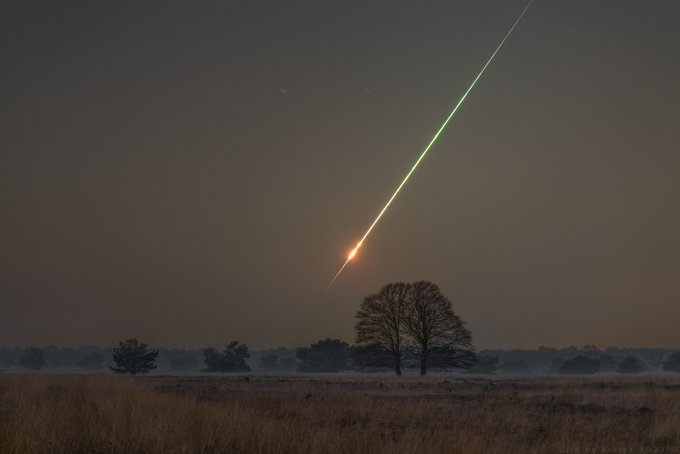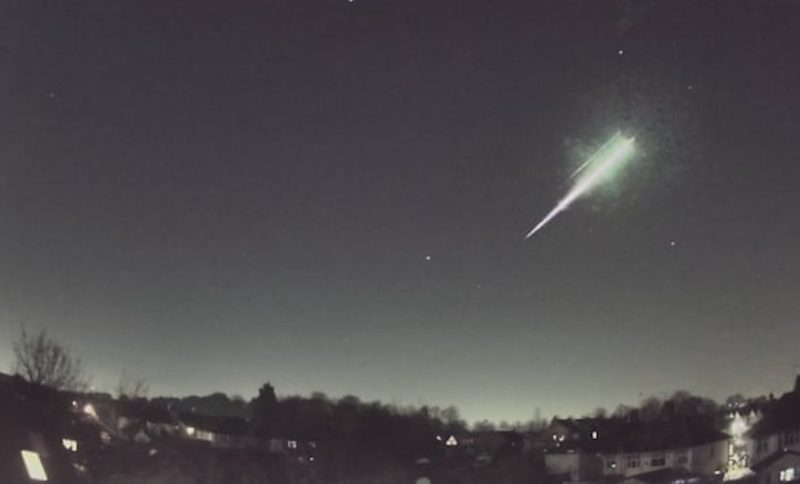Early Monday, an asteroid entered the Earth’s atmosphere and burnt up over the English Channel, creating a brilliant spectacle photographed by many inhabitants along its path. Photos and videos showed it leaving a bright green trail before illuminating the night sky with orange lights.
The object was identified by the European Space Agency and NASA’s Center for Near-Earth Object Studies and was around one meter in diameter.
It was the fourth time in history that an asteroid hit has been predicted in advance. According to the ESA, the correct forecast is “an indication of the fast developments in worldwide asteroid detection capacity.”
“Are you in the neighborhood? “Be on the lookout for a #ShootingStar!” the ESA tweeted Sunday, adding that the tiny asteroid will safely enter Earth’s atmosphere over northern France at about 4 a.m. CET.

Those on the ground in Southern England and along the French coast did just that. They turned to social media to share their observations of the flaming space rock dubbed “Sar2667.”
Many others went outdoors in the early morning hours to catch the occasion on camera, calling it “magnificent” and “wonderful.” Others looked out their windows for what the International Meteor Association said would be a “beautiful blaze” visible in Belgium and the Netherlands.
Those who endured the freezing weather in Portsmouth, England, thought the scenery was “absolutely worth the numb hands.” Witnesses in Normandy, France, posted footage of the sky changing from blue to orange.
Many individuals turned to Twitter to congratulate the space agencies for informing them of the event ahead of time, allowing them to position themselves to see the celestial event, even if it meant staying up late.
According to NASA, asteroids, sometimes known as “minor planets,” are ancient chunks of wreckage left behind when the solar system originated around 4.6 billion years ago, which claims to have tallied over 1.2 million asteroids.
According to NASA, asteroids collide in certain situations, causing bits to break off and produce meteoroids. When meteoroids burn up when they approach the Earth’s atmosphere, they leave a light streak in the sky. According to NASA, asteroids circle the sun and are known to travel unpredictably by spinning and tumbling.









